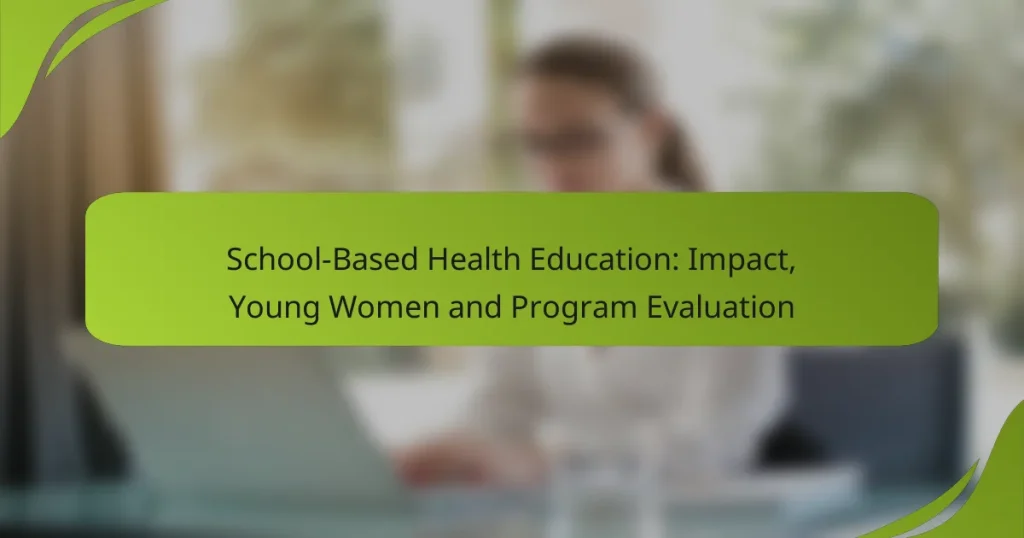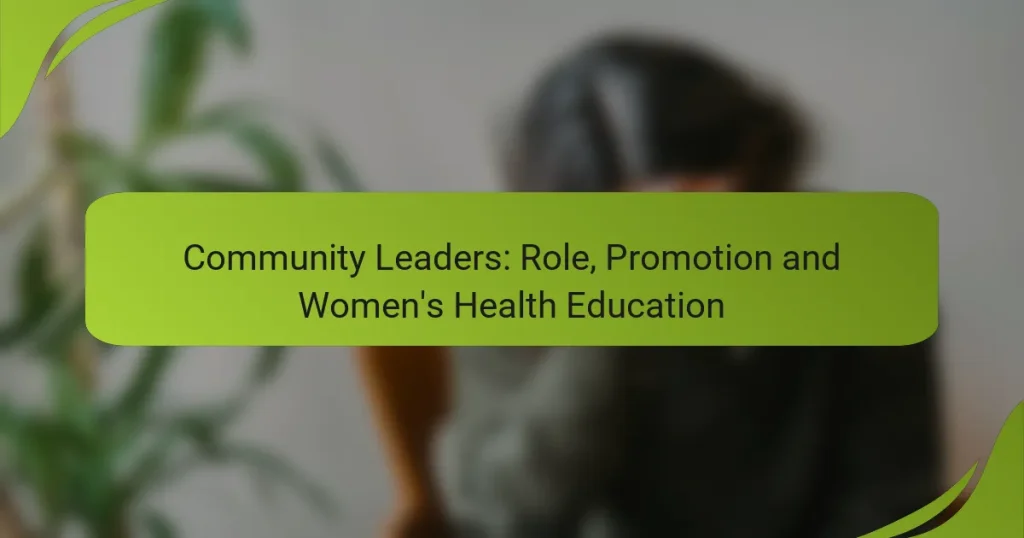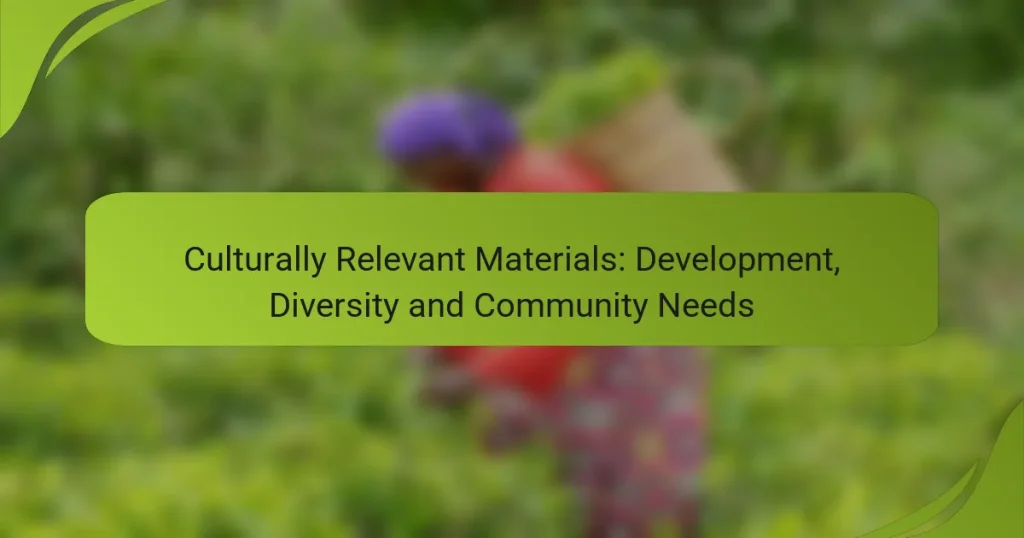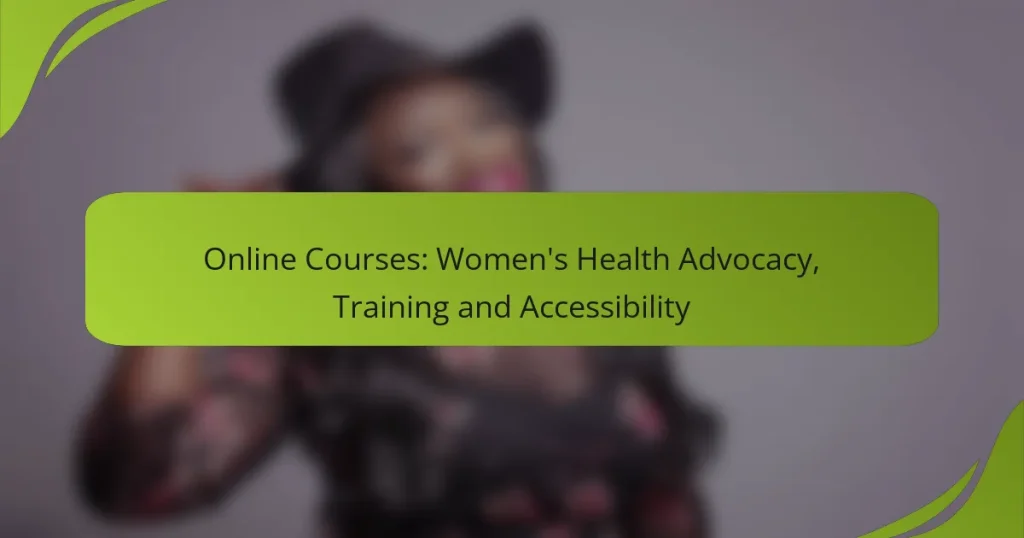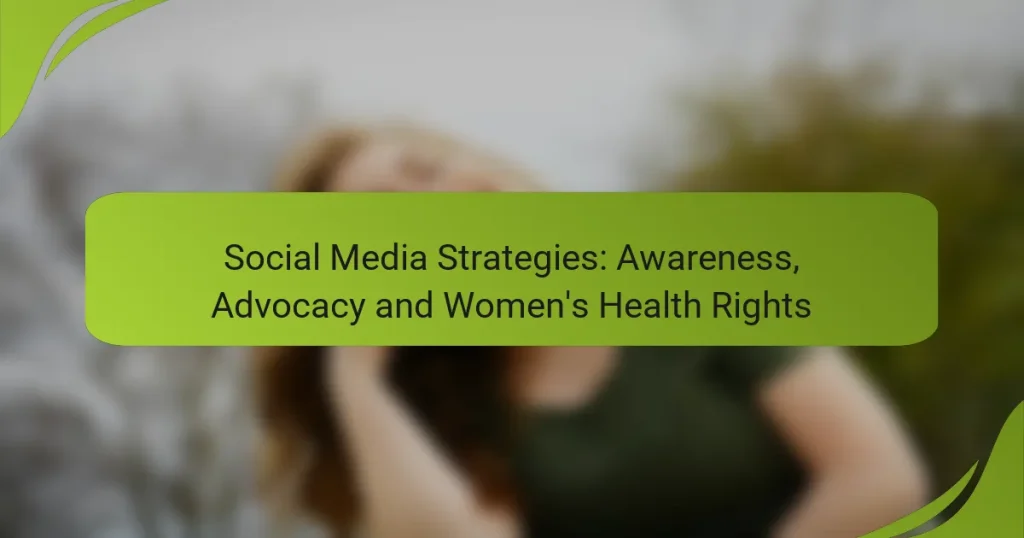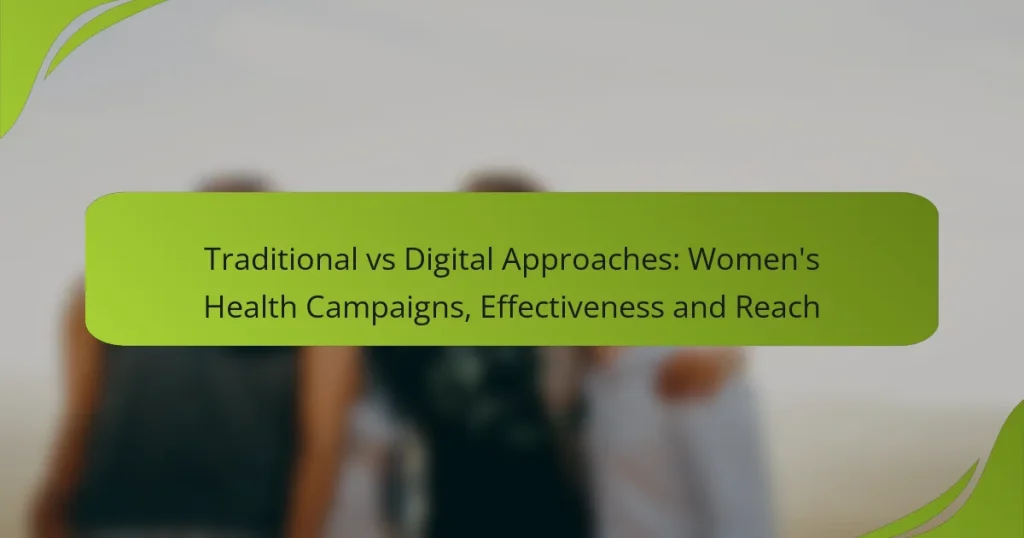Women’s health and rights initiatives play a vital role in promoting education and awareness, ensuring that women have access to essential healthcare services and information. By focusing on reproductive health, preventive care, and overall wellness, these programs empower women to make informed decisions about their health. Non-profit organizations are key players in this effort, providing resources and advocacy to raise awareness about women’s specific health issues and support their rights.
Community Leaders: Role, Promotion and Women’s Health Education
Culturally Relevant Materials: Development, Diversity and Community Needs
Health Education Workshops: Effectiveness, Urban Focus and Engagement
Online Courses: Women’s Health Advocacy, Training and Accessibility
Social Media Strategies: Awareness, Advocacy and Women’s Health Rights
Traditional vs Digital Approaches: Women’s Health Campaigns, Effectiveness and Reach
What are effective women’s health and rights initiatives in the United States?
Effective women’s health and rights initiatives in the United States focus on providing education, access to healthcare, and advocacy for women’s rights. These initiatives aim to empower women through informed choices and equitable healthcare services.
Planned Parenthood programs
Planned Parenthood offers a range of programs aimed at improving women’s health and reproductive rights. These include education on sexual health, access to contraceptives, and preventive services such as cancer screenings and STI testing.
Through community outreach and partnerships, Planned Parenthood ensures that women from diverse backgrounds can access essential health services. Their educational resources help women make informed decisions about their reproductive health.
Women’s Health Initiative
The Women’s Health Initiative (WHI) is a long-term national health study aimed at addressing the major health issues that affect women. It focuses on chronic diseases, including heart disease, cancer, and osteoporosis, providing valuable data to improve health outcomes.
Participants in the WHI engage in various studies that explore the effects of hormone therapy, diet, and lifestyle on women’s health. The initiative also emphasizes the importance of preventive care and regular health screenings.
National Women’s Law Center campaigns
The National Women’s Law Center (NWLC) runs campaigns to advocate for policies that protect and promote women’s health and rights. Their efforts include fighting for access to affordable healthcare and reproductive rights, as well as addressing workplace discrimination.
By mobilizing grassroots support and collaborating with other organizations, the NWLC aims to influence legislation and public policy. Their campaigns often highlight the need for equitable healthcare access for all women, particularly those in marginalized communities.
How do education and awareness programs improve women’s health?
Education and awareness programs enhance women’s health by providing critical information and resources that empower them to make informed decisions about their health. These initiatives focus on reproductive health, preventive care, and overall wellness, leading to better health outcomes for women.
Increased access to reproductive health information
Access to reproductive health information is vital for women to understand their bodies and make informed choices. Programs that disseminate knowledge about contraception, sexually transmitted infections, and pregnancy can significantly reduce health risks. For instance, community health centers often provide free workshops and materials that cover these topics, ensuring that women from various backgrounds can benefit.
Moreover, digital platforms and mobile applications are increasingly being used to reach women in remote areas, offering them easy access to reliable health information. This approach not only broadens the reach but also allows women to seek information discreetly and at their convenience.
Empowerment through community workshops
Community workshops play a crucial role in empowering women by fostering a supportive environment where they can share experiences and learn from one another. These workshops often include discussions on health rights, self-care practices, and navigating healthcare systems, which can enhance women’s confidence in managing their health.
Additionally, workshops can provide practical skills, such as how to advocate for oneself in medical settings or how to access local health services. By engaging in these community initiatives, women not only gain knowledge but also build networks of support that can lead to improved health outcomes and greater advocacy for their rights.
What role do non-profit organizations play in women’s health education?
Non-profit organizations are crucial in women’s health education by providing resources, advocacy, and community outreach. They often focus on raising awareness about health issues specific to women and offer programs that empower women through knowledge and support.
Advocacy by the American Association of University Women
The American Association of University Women (AAUW) advocates for women’s health education by promoting research and policies that support women’s rights in healthcare. They provide resources that highlight the importance of equitable access to health services and education.
AAUW initiatives often include workshops, seminars, and partnerships with local organizations to disseminate information about women’s health issues. Their focus on education helps to empower women to make informed decisions regarding their health.
Programs by the Women’s Health Foundation
The Women’s Health Foundation offers various programs aimed at improving women’s health literacy and access to care. Their initiatives include educational workshops, online resources, and community events that focus on topics like reproductive health, nutrition, and mental well-being.
By collaborating with healthcare providers and community leaders, the Women’s Health Foundation ensures that their programs are relevant and accessible. They often provide practical tools and resources that women can use to advocate for their health needs effectively.
What are the key components of successful awareness campaigns?
Successful awareness campaigns are built on clear objectives, targeted messaging, and effective communication channels. These components work together to engage diverse audiences and promote understanding of women’s health and rights issues.
Targeted messaging for diverse communities
Targeted messaging is essential for reaching various communities effectively. It involves crafting messages that resonate with specific cultural, social, and economic backgrounds, ensuring that the content is relatable and relevant. For instance, using local languages and culturally appropriate examples can enhance engagement.
Consider segmenting your audience based on demographics such as age, ethnicity, and socioeconomic status. Tailoring messages to these segments can improve the effectiveness of the campaign. For example, a campaign aimed at younger women might focus on social media trends, while one for older women could emphasize community health resources.
Utilization of social media platforms
Social media platforms are powerful tools for raising awareness and engaging with audiences. They allow for real-time interaction and can amplify messages quickly. Platforms like Facebook, Instagram, and Twitter can be used to share educational content, personal stories, and updates on women’s health initiatives.
To maximize impact, consider creating shareable content such as infographics, short videos, and live Q&A sessions. Engaging influencers or community leaders on these platforms can also help broaden reach and credibility. Regularly analyze engagement metrics to refine your strategy and ensure that your messaging remains effective and relevant.
How can local governments support women’s health initiatives?
Local governments can support women’s health initiatives by providing essential funding and fostering partnerships with health organizations. These efforts can enhance access to healthcare services and improve educational outreach in communities.
Funding for community health programs
Funding is crucial for the sustainability of community health programs focused on women’s health. Local governments can allocate budgetary resources or seek grants to support initiatives that address specific health needs, such as maternal care or reproductive health services.
For example, a local government might set aside a percentage of its health budget specifically for women’s health initiatives, ensuring that programs receive consistent financial support. Additionally, collaborating with non-profits can help leverage further funding opportunities.
Partnerships with local health organizations
Establishing partnerships with local health organizations can amplify the impact of women’s health initiatives. These collaborations can facilitate the sharing of resources, expertise, and outreach efforts, making programs more effective.
For instance, a local government might partner with a women’s health clinic to provide free health screenings or educational workshops in underserved areas. Such partnerships can also help in tailoring programs to meet the unique needs of the community, ensuring better health outcomes for women.
What are the challenges facing women’s health education initiatives?
Women’s health education initiatives face significant challenges that hinder their effectiveness. Key obstacles include insufficient funding and resources, as well as cultural barriers that limit access to vital information and services.
Lack of funding and resources
Many women’s health education programs struggle with inadequate funding, which affects their ability to reach and educate their target populations. Without sufficient financial support, these initiatives may lack essential materials, trained personnel, and outreach capabilities.
For example, programs in low-income areas may only receive a fraction of the funding needed to operate effectively, leading to limited workshops and fewer educational materials. This scarcity can result in missed opportunities to inform women about critical health issues.
Cultural barriers to access
Cultural norms and beliefs can create significant barriers to accessing women’s health education. In some communities, discussing health topics openly may be considered taboo, preventing women from seeking information or participating in programs.
Additionally, language differences and varying levels of literacy can further complicate access. Programs must be culturally sensitive and tailored to the specific needs of diverse populations to ensure that women feel comfortable and empowered to engage with health education resources.
How do international women’s health initiatives compare?
International women’s health initiatives vary in scope, funding, and focus areas, often tailored to the specific needs of different regions. While some programs emphasize reproductive health, others may prioritize education, violence prevention, or economic empowerment.
Global Fund for Women programs
The Global Fund for Women supports initiatives that promote women’s rights and health across the globe. Their programs often focus on funding grassroots organizations that address issues such as gender-based violence, reproductive rights, and economic justice.
These programs operate by providing financial resources, training, and advocacy support to local groups. For example, they may fund workshops that educate women about their health rights or support campaigns that raise awareness about domestic violence.
To effectively engage with Global Fund for Women programs, organizations should align their missions with the fund’s priorities and demonstrate a clear impact on women’s health and rights. Successful applicants often highlight community involvement and sustainable outcomes in their proposals.
